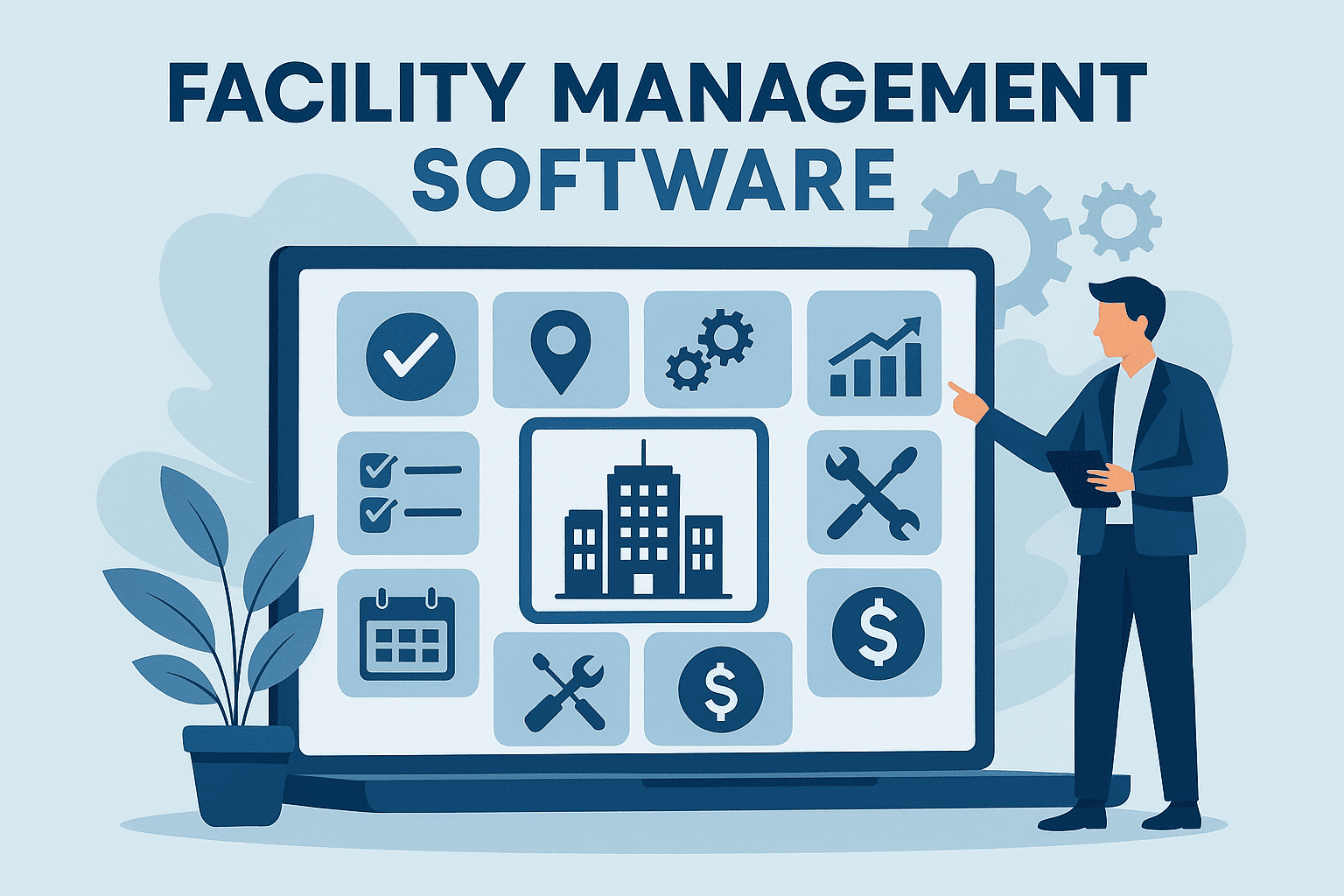In today’s fast-paced business environment, keeping buildings and facilities running smoothly is an absolute must. Companies, large and small, are managing more assets, maintenance schedules, legal compliance, and vendor engagement than ever before. Facility Management Software (FMS) has grown to provide incredible solutions to help meet these challenges.
In this article, we will define Facility Management Software, the essential features and benefits of FMS, and the importance of FMS for every business in 2025.
What Is Facility Management Software?
Facility Management Software (FMS) system is a digital tool to simplify the management and ongoing maintenance of a company’s physical assets and infrastructure. It is used to manage buildings and a company’s equipment and resources from one single point.
FMS covers everything from preventive maintenance to space management, energy management, work order management, compliance management, and vendors.
Fewer and fewer companies rely on manual spreadsheets or disconnected systems because FMS allows for automation, real-time monitoring and measurement, and data and analytics-driven decision-making to achieve functionality and operational efficiency.
Key Features of Facility Management Software
A great Facility Management Software comes with a plethora of features that make it easy for you to manage your facilities. Here is a list of critical functionalities that should be included:
1. Asset Management: This lets you view any and all of your physical assets, including HVAC, electrical, and office furniture, as well as track what is being repaired and maintained.
2. Preventive/Predictive Maintenance: You can manage the scheduling of regular maintenance tasks, and predictive maintenance can help avoid catastrophic failures with predictive analytics.
3. Space and Resource Management: With space management and resource management capabilities you can ensure that space is allocated and used effectively across the organization and save costs.
4. Vendor and Contractor Management: You can maintain a database of contractors and vendors for you to use with ease to make service requests quickly and communicate with.
5. Energy and sustainability tracking: Track and report energy usage and sustainable practices to help reduce costs and environmental compliance requirements.
6. Mobile App: Most FMS solutions today have mobile apps, enabling facility managers to create work orders,
Why Is Facility Management Software Essential in 2025?
Today’s businesses are up against challenges with operational costs, compliance regulations, and current trends towards remote work. Here’s why implementing FMS is essential:
– Cost Savings: Preventative maintenance and resource allocation can lead to the elimination of unnecessary expenses.
– Compliance: Rest easy knowing you are in compliance with safety and legal regulations without lifting a finger.
– Productivity: Where employees work is a big factor, and they will perform better in a space that is well maintained and optimized.
– Decisions Based on Data: Real-time analytical data play a big role in informed personnel decisions regarding building upgrades, usage of space, and energy management.
– Large-Scale Facility Management: Manage multiple subject locations from one platform without being on-site.
Benefits of Using Facility Management Software
There are several tangible advantages of implementing an FMS for organizations. Here are a few examples:
1. Improved Operational Efficiency: Automating maintenance schedules, work orders, and asset tracking, can save time and minimize mistakes.
2. Increasing Your Assets Lifespan: By taking steps and following a regular preventive maintenance schedule, it allows your asset and equipment to run longer effectively.
3. Budgeting Better: FMS allows you to better understand your operational costs, allowing you to plan your business budgets more effectively.
4. Sustainability & Energy Savings: Collecting data allows you to monitor and control energy usage, ensuring that you are not paying more than needed on utility bills, while also allowing you to appear responsible by attaining a green building standard.
5. Employee Satisfaction: An organized and maintained workspace allows more comfort for employees and aids productivity.
How to Choose the Right Facility Management Software
When it comes to finding the right FMS, your specific business needs, budget, and the ability to scale are important factors. Here are some things to consider:
– Cloud-Based vs On-Premise: Cloud solutions offer better scalability and access from anywhere.
– Integrations: Be certain it will integrate with your current systems (ERP system, accounting systems).
– Mobile: Mobile access is essential for facility managers and on-site technicians.
– User Interface: Your team will be better able to adapt with a clean, intuitive design.
– Vendor Support & Updates: Choose a provider that has solid customer support and is committed to frequent updates to the software.
Conclusion
In a competitive business climate, effective facility management involves not only maintenance but also managing resources, costs and compliance. Facility Management Software makes all this possible. When used to its fullest, and with the correct Happy Property solutions such as Property Automate, you’ll drive value for your business, improve efficiency and provide an overall better experience for your employees and customers.
